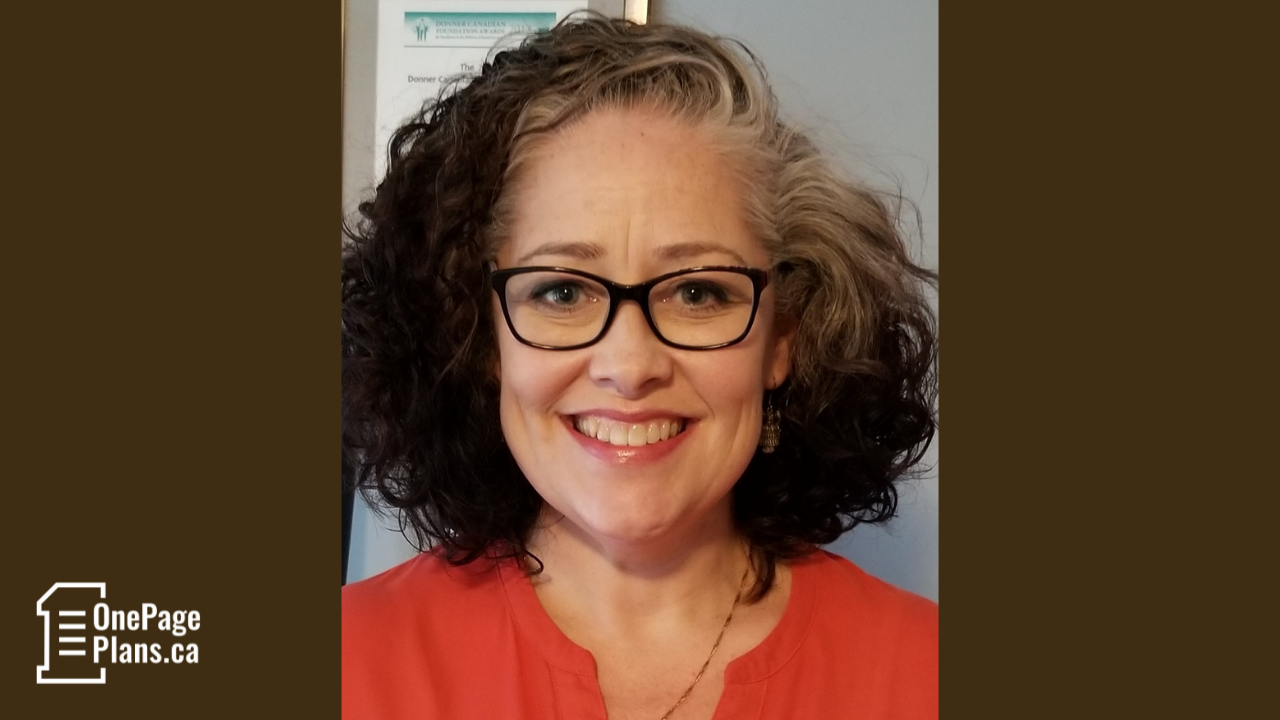Planning a career move? Three key tips for a successful strategy

Whether you’re switching jobs, changing careers, or transitioning into retirement, a few guiding principles can make all the difference in your success.
In the latest episode of The Toughest Call podcast, Rishad Tobaccowala, futurist, and author of "Restoring the Soul of Business," shares how he approached his shift into something completely different.
In this video analysis, Chaz Thorne discusses Rishad's guiding principles for a successful career move.
After 30 plus years of building a career as a leader within Publicis, the third-largest global communications group, Rishad decided it was time for him to take on a new challenge.
With the decision to leave already made, he then switched to HOW he would leave and broke that process down into three guiding principles:
- Consult people you trust
- Make an elegant exit
- Practice patience with yourself
Consult people you trust
Consult people in your professional network about your plans for the future. They may have done similar...
Toughest Call Ep. 109 – Doing the impossible - TRANSCRIPT

Lori Nikkel 00:08
And we knew that we had to scale instead of three years in minutes, and scaling wasn't just not two people event scaling the whole business.
Chaz Thorne 00:17
Welcome back, or Welcome to toughest call a podcast for organizational leaders, where we hear stories from your leadership colleagues about career defining decisions. I'm your host, Chaz Thorne. In this episode, I'm talking with Lori Nikkel about her decision to hasten the pace of international expansion to meet the growing demand for food during the pandemic. Lori is the CEO of Second Harvest, a charity that recovers fresh unsold food to protect the environment and provide immediate hunger relief. How many times in your career Have you been told something you wanted to attempt was impossible. Though this may turn out to be true. It's also a position often taken by the overly risk averse to stifle innovation and maintain the status quo. Lori talks about how she leaned on the power have talented and pa...
The Difference between Possible and Impossible often comes down to one thing…

Passion
How many times in your career have you been told that something is impossible to do?
While accepting that “fact” might be relatively easy when there’s not much on the line, what happens when the stakes are monumental?
That’s exactly the situation Lori Nikkel faced when COVID created a massive wave of families turning to food banks. As the CEO of a food rescue organization called Second Harvest, Lori knew she was at a very pivotal moment.
She had two choices: put the brakes on her three-year national expansion plans and wait for the pandemic to end; or hit the gas and complete the expansion in a matter of weeks.
Seeing an opportunity amid the crisis
To make that tough choice, all Lori had to do was take a hard look at two of the biggest casualties of the lockdowns: the collapse of the restaurant industry, and the collapse of the job market.
In other words, a massive amount of food was about to be wasted at a time when the need for food had never been greater. To Lor...
Trying to achieve the impossible? Four Quick Tips from Someone who’s Done it.

During your career, you’ll likely be told that certain things are simply impossible.
Sometimes we accept that notion as fact.
But other times, we dig in our heels to prove the world wrong.
For Lori Nikkel, her opportunity to do the impossible came when COVID lockdowns swept the country. As the CEO of Toronto-based food rescue organization, Second Harvest, she knew that mass restaurant closures would mean millions of tons of food diverted to landfills at a time when the need for food for vulnerable Canadians was exploding.
Although Lori already had a three-year plan to expand Second Harvest nationally, it was clear that the need for that expansion was NOW.
So, instead of sticking to the three-year plan, she decided the only real choice was the impossible one: to condense that plan to a matter of weeks.
Getting there wasn’t easy. But in the end, Lori and her team crossed the finish line and kept millions of families fed during their hour of need.
While there a...
Toughest Call Ep. 108 – Finding Harmony between Personal and Professional Ambitions - TRANSCRIPT

Heather Byrne 00:06
It was emotional. It was emotional people definitely felt like it was out of left field.
Chaz Thorne 00:13
Welcome back, or Welcome to toughest call a podcast for organizational leaders where we hear stories from your leadership colleagues about career defining decisions. I'm your host, Chaz Thorne. In this episode, I'm talking with Heather Byrne about a tough call, she faced deciding to leave an organization she cared deeply for to relocate closer to her extended family. Heather is the executive director of Alice house, a provider of safe second stage housing and support for women and children leaving situations of intimate partner violence. Many of us struggle with finding and maintaining a healthy balance between family and career. At times, it can feel impossible to reconcile our personal and professional ambitions. Heather talks about how taking care of what made her feel, allowed her to become an even more effective leader.
Heather Byrne 01:...
Finding Harmony between Personal and Professional Ambitions

It Starts with being Grounded in Who You Are
In every professional’s life, there’s a moment where you second guess what chasing the dream really means. In those moments, you realize the cost that professional ambitions can have on your personal ones.
That’s the position Heather Byrne found herself in after a move to Saskatoon.
After relocating to the city from Eastern Canada, Heather and her husband were crushing it professionally. They each had jobs they loved with significant potential for growth.
The problem was they were missing the family connections that were an integral part of their values and identities.
Feeling Isolated
Heather says that even though she and her husband often exclaimed how pleased they were with their career trajectories, they started to have deeper conversations about how isolated they felt.
“We always said that family was the most important thing to us and finding a place to put down roots for our kids,” says Heather. “After some tough conversations, ...
When Family and Career Collide

How knowing YOU can make all the difference
We all have moments when we re-think what success really means. When executive Heather Byrne and her husband moved out west to chase the ultimate career path, they found out that all that glitters isn’t gold.
Despite their professional success, they felt increasingly isolated from the deep family connections and traditions they left behind.
The solution finally revealed itself when Heather and her husband had an honest talk about their personal values and agreed that family really did need to come first.
In the end, the move not only proved to be a blessing for their family but their professional careers as well.
Here are four things we can learn from Heather about how to make your next big move the right one:
- Tune out the noise.
When enough people tell you you’re lucky for your lot in life, it’s easy to believe them. But, while you may be lucky, the real question to ask is, “are you happy?” Tuning out the noise to ...
Toughest Call Ep. 107 – Breaking with tradition and forging your own path - TRANSCRIPT

Jonathan Torrens 00:04
There are always different avenues you can take and of the traditional one isn't working. Find a way. It's sort of the entrepreneurial spirit. And most people I know that have achieved some level of success had some donkeys on the road to get there.
Chaz Thorne 00:21
Welcome back, or Welcome to toughest call a podcast for organizational leaders where we hear stories from your leadership colleagues about career defining decisions. I'm your host, Chaz Thorne. In this episode, I'm talking with Jonathan Torrens about his decision to take control of his career and work by striking out on his own and leaving behind the suffocating notion of that's just the way things are done around here. for 30 years, Jonathan has been a mainstay in Canadian TV with resume credits that includes street sense john division Trailer Park Boys, Mr. D. This hour has 22 minutes to grassy Royal Canadian Air Force and Letterkenny, a multiple Screen Award winner, Jonathan has vast exper...
How Canadian TV Star Jonathan Torrens Changed his Strategy and Wound Up on Top

If you’re Canadian, there’s a good chance you know Jonathan Torrens. He’s been a mainstay of Canadian TV for decades, with credits in hits like Street Cents, This Hour has 22 Minutes, Trailer Park Boys, and Letterkenny.
As his success matured, he followed the path countless Canadian stars took before him: he moved to LA to see if he could take his talents to the international stage.
Not having a vote
Making it the “traditional way” in Hollywood meant he’d be less directly involved in his success.
Jonathan says the thing that frustrated him about Hollywood was he was always so far away from the nucleus of every decision.
“I had a manager who had to call an agent who had to talk to a casting director who had to talk to the director to see if they'd consulted with the producer to see if I had a shot at this thing,” says Jonathan.
“So, as a result, in addition to not having a vote in my career, I also wasn't booking enough of the things that truly interested me.”
Heading back home
...Finding Your Path: Four Ways to Find Fulfilling Work from One of Canada’s Best-Known TV Personalities

When it comes to Canadian TV personalities, you’d be hard-pressed to find someone more steeped in our culture than Jonathan Torrens.
With an impressive list of credits from some of Canada’s most popular TV shows (including Royal Canadian Air Farce, Trailer Park Boys, and Letterkenny), he’s been a mainstay of this country’s entertainment scene for decades.
Like many stars before him, Jonathan decided to answer the big “what if” question by making the move to Los Angeles in pursuit of bigger things.
As part of the Hollywood machine though, Jonathan quickly realized he had to put his trust – and his career – in the hands of others.
In the end, Jonathan decided to return to Canada and embark on an entirely new strategy that put him back in the driver seat, and back to creating work he was truly passionate about.
Here are four things learned from Jonathan about how to build success through meaningful work:
- Be honest with yourself.
Take the time to think about what kinds of pro...

